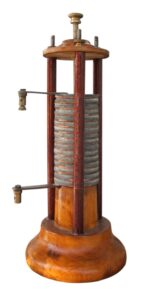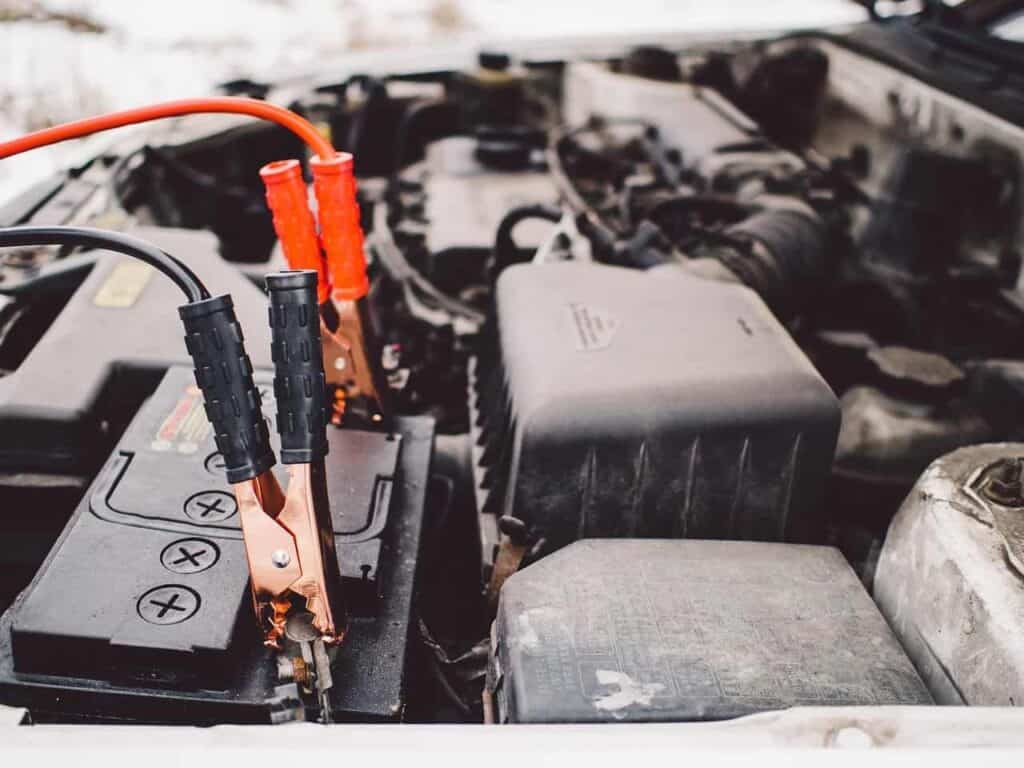Table of Contents
Solar Battery 101: The Definitive Guide for Beginners
In this comprehensive guide to solar batteries, we cover all the basics.
In this post we introduce the types of solar battery and their chief characteristics. We also have a little bonus for you at the end where we will look at one battery that will revolutionise solar energy storage.
How does a solar battery work?
Solar batteries store the energy produced by solar panels. It stores the energy in an electrolyte as chemical energy before converting it to electrical energy when the battery is in use.
What is a deep cycle battery?
A deep cycle battery allows you to draw more energy from it without damaging it. Up to 50% of the energy in a deep cycle battery is usable without damaging the battery. We use deep cycle batteries in solar power systems because you can draw more energy from them before they need to be recharged.
Shallow cycle batteries in contrast will give you less energy before you need to recharge them. That’s if you want to keep them in good condition for longer. Shallow cycle batteries will give only 20% of their stored energy without suffering damage. Car batteries are shallow cycle batteries.
What makes a battery a solar battery?
In theory, any battery can work as part of a solar energy system. In theory, you could take the battery from your car and plug it into your solar system. No rule says you can’t.
In practice, using a car battery as a solar battery won’t be effective. You need a deep cycle battery. A deep cycle battery will allow you to use 50%, even up to 80% of the energy stored.
A shallow cycle battery only about 20%. To get the same energy, a shallow cycle car battery would need a much larger capacity. Deep cycle batteries also last longer. They’re better at giving out power without suffering critical damage.
Now you know how a battery works. But do you need a battery? In generators vs solar batteries, we look at whether you should get batteries and what the pros and cons are.
Characteristics of a battery
There are two key characteristics of a solar battery that you need to know. These are the technology the battery uses and its capacity.
Battery technology
Also known as the battery chemistry. This is because batteries use chemical technology to store energy. That’s what distinguishes the different solar batteries on the market. Currently, there are two main types of battery technology used for solar applications, namely lead-acid and lithium batteries.
Aside from solar systems, lead-acid batteries are also used in cars, planes and most internal combustion engines that need an electrical current.
We use lithium batteries for a variety of applications. If you’re reading this on your phone or tablet, then you have a lithium battery in your hand. The enormous growth in the electric vehicle market is largely because of the rapid improvement of lithium battery technology.
Capacity of the battery
Battery capacity measures how much energy, in amp-hours (Ah), a battery can supply. It is how much energy can be stored and drawn from it. A battery rated 150Ah can give a current of 1A for 150 hours or 5A for 30 hours.
A batteries capacity is a factor of the rate at which current is drawn from it. The faster the rate, the lower the capacity. Chemistry and capacity determine how much energy you can draw from a battery or how much maintenance it requires.
Types of solar batteries
Batteries differ in their chemical composition. That’s essentially what sets off a lithium battery from a lead-acid battery.
Lithium batteries
Lithium is the lightest of all known metals. Lithium solar batteries can store a more energy, and they hold a charge for longer. This makes them both smaller and lighter than lead-acid batteries with the same capacity.
The biggest drawback to lithium batteries is they can be up to three times more expensive than lead-acid. Hopefully, as the technology matures, the price will continue to drop as it has been doing in recent years.
Lead acid batteries
Lead-acid batteries are cheaper than lithium. That’s the primary reason they are such a popular option for a lot of solar installations.
The biggest drawback to lead-acid batteries is that they don’t pack as much energy as a lithium battery. That means you will probably have to buy more to get the same amount of energy. Remember, they are bigger and weigh more.
Also, lead-acid batteries require maintenance, unlike lithium that does not require you to be hands on.
This was a brief introduction to lithium and lead-acid batteries. In our lithium vs lead-acid batteries comparison, we dig deeper to find out which is the best battery for solar.
Flow batteries
These are not yet available on the market as they are still in development. We mention them here to highlight some exciting research into batteries. Battery research and development has become very competitive as players race to develop a cheaper, more energy-dense battery.
Currently, the front runner is the flow battery. Reducing their cost and susceptibility to corrosion would make Vanadium flow batteries a game changer in energy storage.
The reason for my interest in flow batteries is that they potentially have no charging time. In a flow battery, a membrane separates two vanadium salt solutions. Pumping the solutions into the membrane generates the electricity.
A flow battery is recharged by replacing the uncharged solution. Replacement happens like a car refuelling.
Solar battery FAQ's
These are answers to some of the most frequently asked questions on solar batteries.
How long do solar batteries last?
A solar battery’s lifespan ranges between 5-15 years, depending on what type it is. Lithium batteries last upwards of 10 years. Lead-acid batteries last between 3-5 years.
How many hours of power will a solar battery give?
This depends on several factors, the most important being:
- How many appliances are you running?
- The total capacity of your batteries.
These and other variables will give you an idea of how long you can power your house for.
Conclusion
Batteries are the most expensive component of a solar power system. However, battery technology is experiencing an explosion in growth because of electric vehicles and the push toward renewables like solar and wind.
Millions of dollars are being poured into research and design as companies race to build cheaper, better batteries. This is good news for us. Prices for batteries have been going down in the last decade.
Hopefully, with continued development in the space, that trend will continue in the months and years to come. Now you know a little more about solar than the average person. But don’t stop there!
Test your knowledge by taking our 5 minute Solar 101 Quiz.

